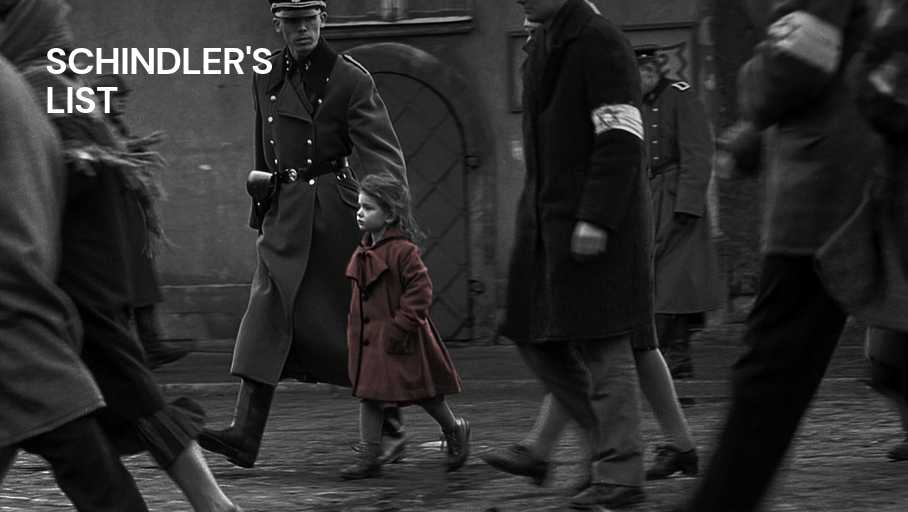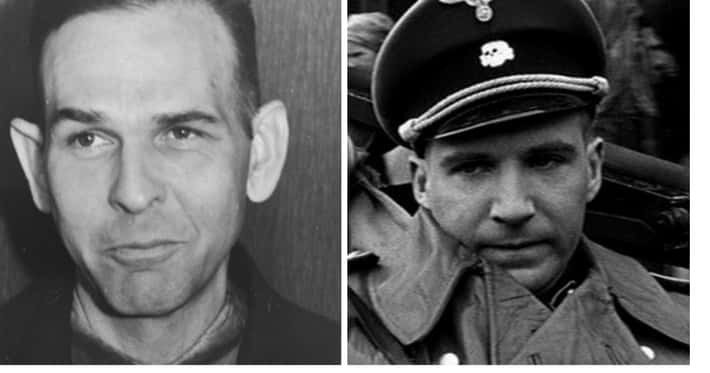
Schindler’s List, directed by Steven Spielberg, is a harrowing drama based on true events, adapted from Thomas Keneally’s novel Schindler’s Ark. The film chronicles the transformation of Oskar Schindler, a German industrialist, from a profit-driven businessman to a savior of over 1,100 Jews during the Holocaust.

Introduction
The film begins in 1939, as the German invasion of Poland initiates World War II. Jewish families from Kraków are forced into overcrowded ghettos under Nazi occupation. Oskar Schindler, an opportunistic member of the Nazi Party, arrives in Kraków, seeking to profit from the war by exploiting Jewish labor. Schindler, with his charisma and connections, befriends high-ranking Nazi officials and gains control of a factory producing enamelware for the German army.
Schindler enlists the help of Itzhak Stern, a Jewish accountant, to manage his factory. Stern is pivotal in arranging for Jewish workers to be employed, as their employment in a war-essential factory grants them protection from deportation or death. While Schindler remains focused on his business interests, Stern sees the factory as a lifeline for many Jewish workers.

The Kraków Ghetto and the Rise of Amon Goeth
In 1941, the Nazis implement their plan to exterminate the Jewish population. They liquidate the Kraków Ghetto, forcing its inhabitants into the Plaszów labor camp, overseen by the sadistic SS officer Amon Goeth. The liquidation is depicted in harrowing detail, highlighting the terror, chaos, and indiscriminate killings as families are torn apart and massacred.
Goeth is portrayed as a brutal and unhinged figure who relishes the power to kill at will. His interactions with Schindler reveal their stark differences: while Goeth views Jews as subhuman, Schindler begins to see their humanity. Schindler’s relationship with Goeth allows him to secure certain privileges for his workers, whom he increasingly regards as individuals worth saving.

Schindler’s Transformation
Initially indifferent to the plight of his workers, Schindler undergoes a profound moral awakening. Witnessing the atrocities committed against the Jews, particularly the liquidation of the ghetto, deeply impacts him. A pivotal moment occurs when Schindler observes a young girl in a red coat wandering through the chaos—a rare instance of color in the black-and-white film. Her later death symbolizes the innocence lost and galvanizes Schindler’s resolve.
Despite the escalating risks, Schindler begins using his wealth and influence to shield his workers from harm. He bribes Nazi officials to ensure their safety, arguing that skilled laborers are essential to his factory’s productivity. Stern becomes Schindler’s moral compass, subtly guiding him toward acts of resistance against the Nazi regime.

The List
As the war nears its end and the Nazis intensify their extermination efforts, Schindler devises a plan to save as many lives as possible. He persuades Goeth to allow him to transfer his factory and workers to Brünnlitz, in Nazi-occupied Czechoslovakia, under the pretext of producing munitions. Stern compiles a list of 1,100 names—“Schindler’s List”—representing Jews who will be saved.
This list becomes a symbol of hope and survival for those condemned to death. Schindler exhausts his fortune bribing officials and securing the transfer of his workers. In one harrowing scene, a train carrying the women and children mistakenly arrives at Auschwitz. Schindler intervenes, using his influence and bribes to rescue them, ensuring their safe arrival at his factory.

Life at Brünnlitz
At the new factory, Schindler deliberately sabotages munitions production, ensuring that no usable weapons are made. He prioritizes the well-being of his workers, providing them with food and shelter despite dwindling resources. Schindler’s compassion and determination to save lives starkly contrast with his earlier opportunism.
As the war ends and the Nazis face defeat, Schindler warns his workers that he must flee to avoid capture as a war criminal. Before departing, the workers present him with a letter attesting to his actions and a gold ring inscribed with a Talmudic quote: “Whoever saves one life saves the world entire.”

The Aftermath
The film concludes with a poignant scene of the liberated workers walking to freedom. Schindler, however, is overcome with guilt, lamenting that he could not save more lives. His emotional breakdown underscores the weight of his actions and the lives he left behind.
In an epilogue, the film transitions to the present day, showing the surviving Schindlerjuden (Schindler’s Jews) and their descendants visiting his grave in Jerusalem. The film ends with a tribute to Schindler’s extraordinary legacy, juxtaposed against the immeasurable loss of the Holocaust.

Themes and Impact
Schindler’s List is a powerful exploration of morality, humanity, and redemption amid unimaginable atrocities. Spielberg masterfully captures the scale and horror of the Holocaust while highlighting individual stories of survival and resilience. The film’s use of black-and-white cinematography, interspersed with brief moments of color, reinforces its haunting realism.
Through Schindler’s journey from apathy to heroism, the film reminds viewers of the potential for goodness in even the most unlikely individuals. It serves as a testament to the enduring impact of one person’s courage and compassion in the face of overwhelming evil.

